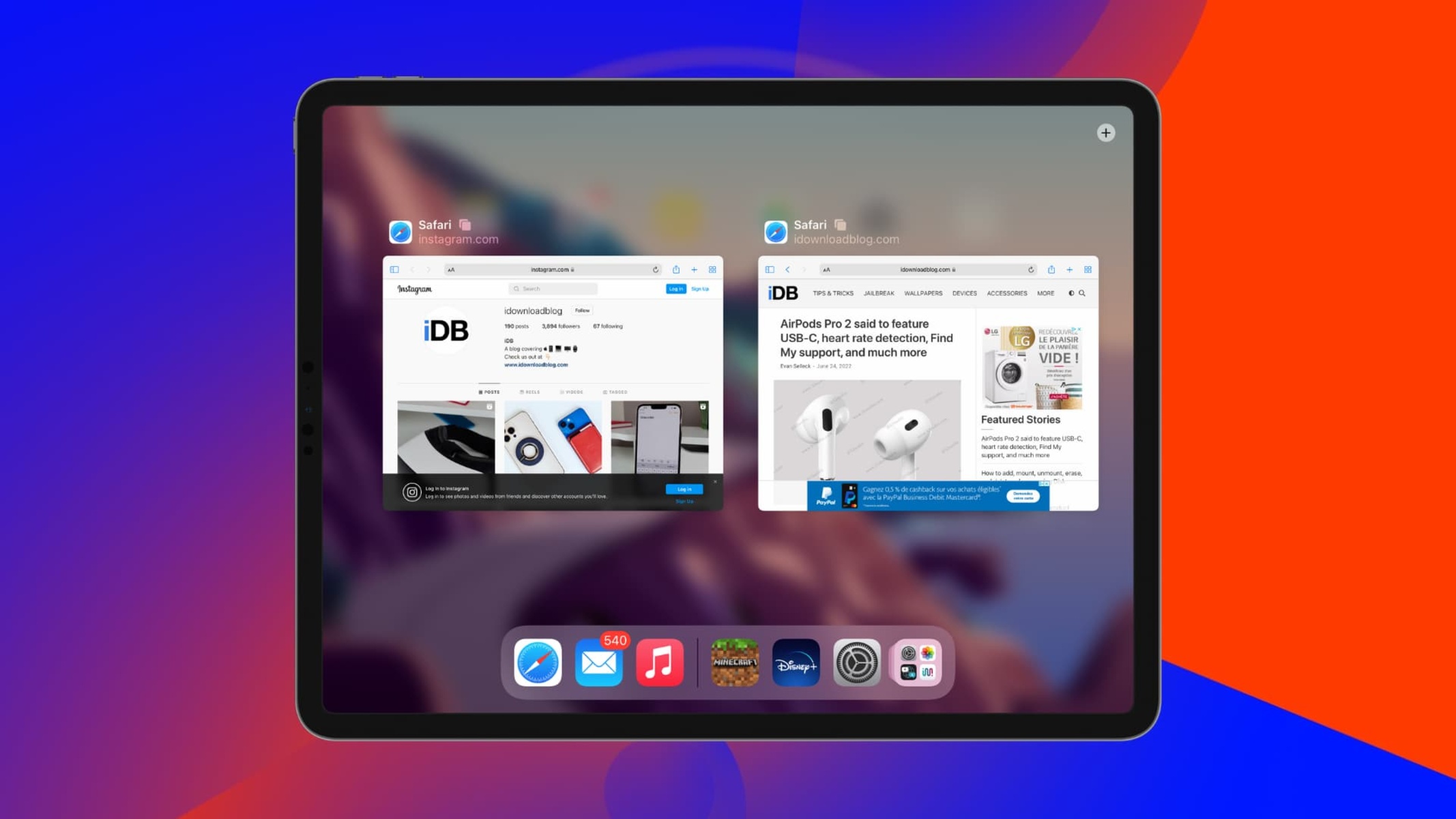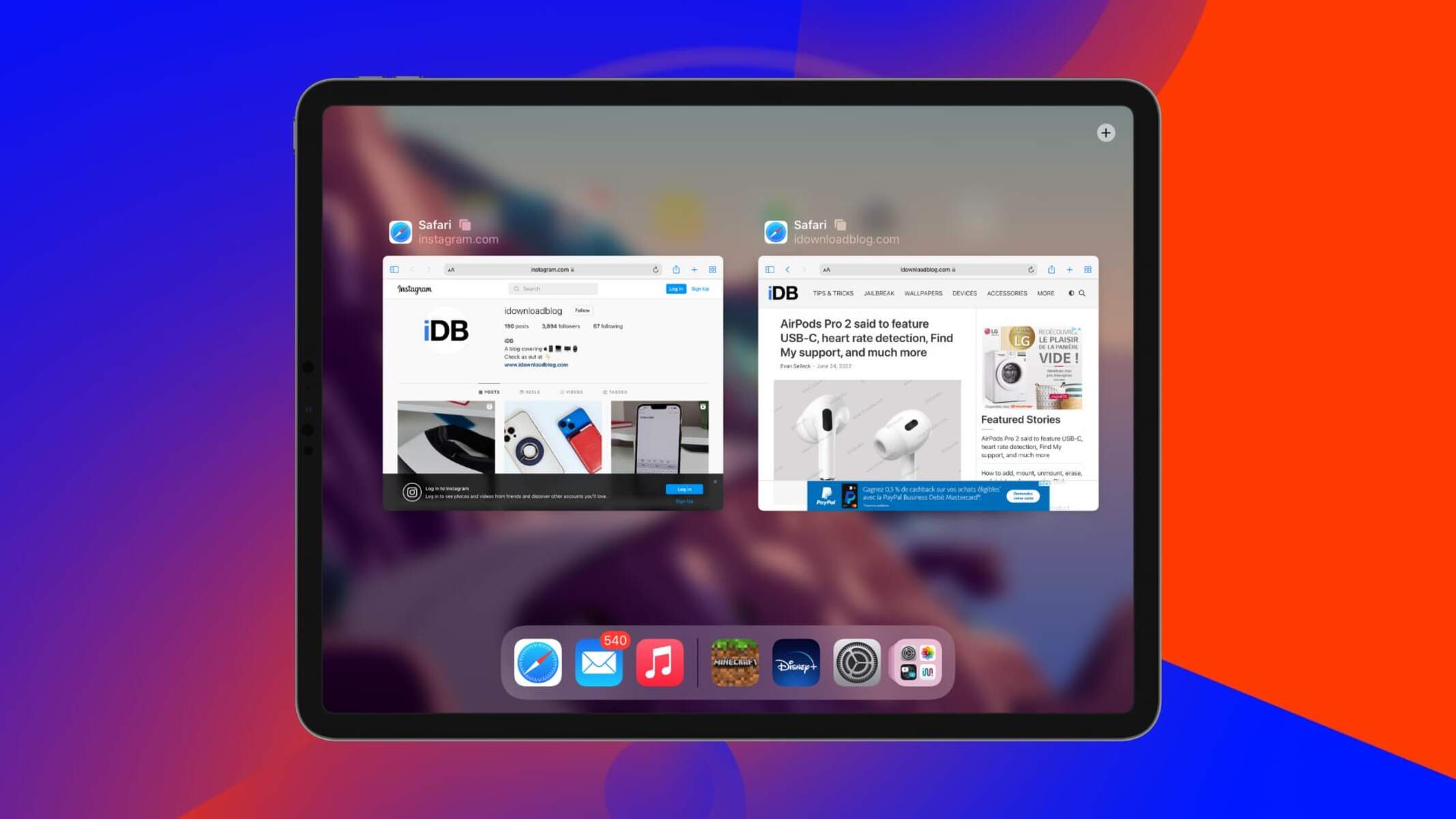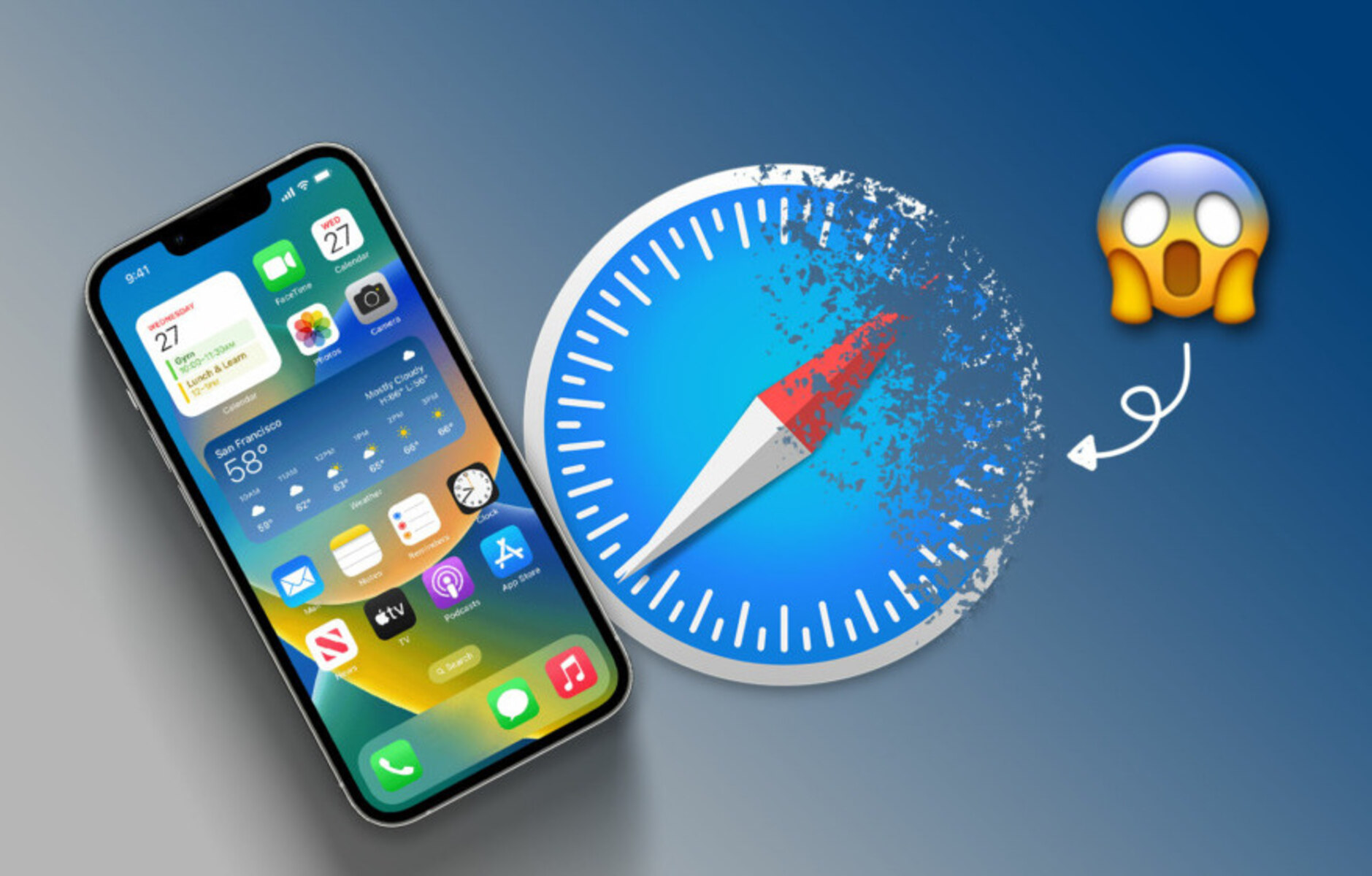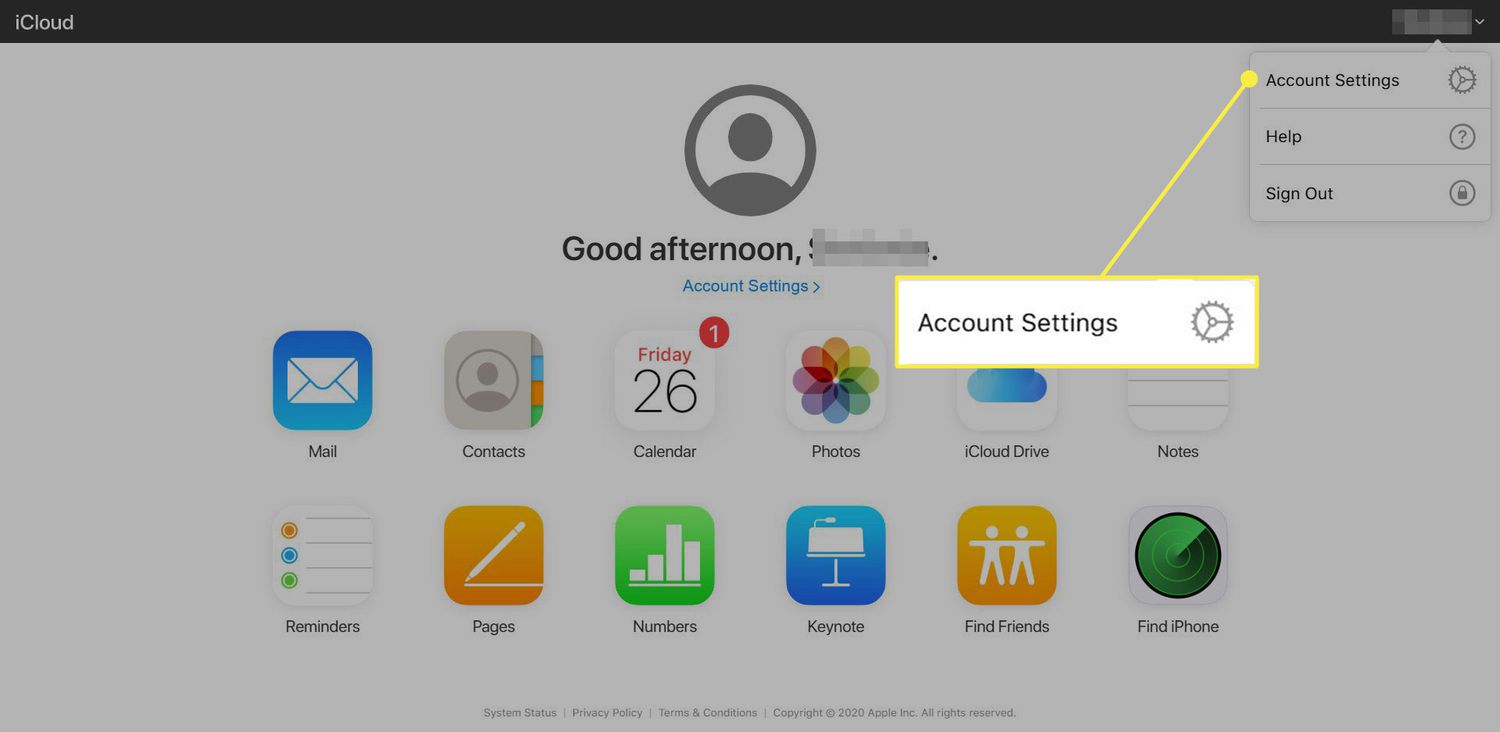Introduction
Have you ever experienced the frustration of opening Safari on your iPhone or iPad, only to find that all your tabs have mysteriously disappeared? It's a perplexing situation that can leave you feeling bewildered and inconvenienced. The tabs in Safari are meant to be a convenient way to keep track of websites you want to revisit or reference later. However, when they vanish without a trace, it can be quite disconcerting.
In this article, we'll delve into the possible reasons behind the sudden disappearance of your Safari tabs and explore various troubleshooting steps to help you recover them. Whether you use Safari for casual browsing, work-related research, or simply to keep track of your favorite websites, the unexpected loss of tabs can disrupt your workflow and cause unnecessary stress.
So, if you've found yourself in the perplexing predicament of missing Safari tabs, fear not! We're here to guide you through the potential causes and solutions, ensuring that you can regain access to your valuable browsing history and resume your online activities seamlessly. Let's embark on this journey to unravel the mystery of disappearing Safari tabs and reclaim the browsing experience you deserve.
Clearing Safari History and Website Data
One of the common culprits behind the sudden disappearance of Safari tabs is the accumulation of excessive browsing history and website data. Over time, this data can become bloated, leading to potential glitches and unexpected behavior within the Safari browser. Clearing the history and website data can often resolve these issues and restore the functionality of your tabs.
To initiate the process of clearing Safari history and website data on your iOS device, follow these steps:
-
Open Settings: Navigate to the "Settings" app on your iPhone or iPad.
-
Scroll Down and Tap Safari: Once in the Settings menu, scroll down until you find the "Safari" option. Tap on it to access the Safari settings.
-
Select "Clear History and Website Data": Within the Safari settings, you'll find the option to "Clear History and Website Data." Tap on this option to proceed.
-
Confirm the Action: A confirmation prompt will appear, asking if you want to clear your browsing history and website data. Confirm the action to initiate the clearing process.
By clearing the history and website data, you effectively remove the clutter that may be contributing to the disappearance of your Safari tabs. This process can also free up storage space and potentially improve the overall performance of the Safari browser on your iOS device.
After completing these steps, relaunch Safari and check if your tabs have been restored. If the tabs reappear, you can continue browsing without the lingering concern of sudden disappearances. However, if the issue persists, it may be necessary to explore additional troubleshooting methods to pinpoint the root cause.
Clearing Safari history and website data is a fundamental maintenance task that can help optimize the performance of the browser while addressing common issues such as tab disappearance. By incorporating this practice into your routine, you can mitigate the risk of encountering similar challenges in the future and enjoy a smoother browsing experience on your iOS device.
Updating Safari and iOS
Ensuring that your Safari browser and iOS operating system are running the latest versions is essential for maintaining optimal performance and addressing potential software-related issues, including the mysterious disappearance of tabs. Software updates often include bug fixes, security enhancements, and improvements to overall stability, making them a crucial aspect of device maintenance.
To check for and install updates for Safari and iOS on your iPhone or iPad, follow these steps:
-
Updating Safari:
- Open the App Store on your iOS device.
- Tap on your profile icon in the top right corner to access your account.
- Scroll down to the "Available Updates" section. If an update for Safari is available, it will be listed here.
- If an update is available, tap the "Update" button next to Safari to initiate the installation.
-
Updating iOS:
- Open the Settings app on your iPhone or iPad.
- Navigate to "General" and select "Software Update."
- If a new iOS version is available, tap "Download and Install" to begin the update process.
By keeping Safari and iOS up to date, you can benefit from the latest features, performance enhancements, and security patches, all of which contribute to a more reliable and seamless browsing experience. Additionally, software updates often include fixes for known issues, which could potentially resolve the underlying cause of the tab disappearance in Safari.
Regularly checking for and installing updates is a proactive approach to maintaining the health of your iOS device and ensuring that you are running the most stable and secure software versions. By staying current with updates, you can minimize the likelihood of encountering unexpected issues, such as missing tabs in Safari, and enjoy the full capabilities of your device.
Incorporating the habit of checking for software updates at regular intervals can help you stay ahead of potential software-related challenges, providing peace of mind and a more consistent user experience. With the latest software versions in place, you can navigate the digital landscape with confidence, knowing that your device is equipped with the most up-to-date features and enhancements.
Remember, staying updated is not just about accessing new features; it's also about safeguarding the stability and functionality of your device, ensuring that it remains a reliable companion in your daily activities.
Checking iCloud Tabs
Another potential avenue to explore when attempting to recover missing Safari tabs is the utilization of iCloud Tabs. iCloud Tabs allow for seamless synchronization of open tabs across multiple Apple devices linked to the same iCloud account. By leveraging this feature, you can check if your missing tabs are accessible on other devices, providing valuable insight into the status of your browsing sessions.
To check iCloud Tabs for your Safari browsing history, follow these steps:
-
Access Safari on Another Device: Open Safari on a different Apple device, such as another iPhone, iPad, or Mac, that is signed in to the same iCloud account.
-
Tap the Tabs Icon: Look for the tabs icon within Safari, typically located in the upper or lower corner of the browser interface. This icon resembles two overlapping squares and represents the tabs view.
-
Navigate to iCloud Tabs: Within the tabs view, there should be an option to access iCloud Tabs. This feature allows you to view tabs open on other devices linked to your iCloud account.
-
Check for Missing Tabs: Once in the iCloud Tabs interface, review the list of open tabs to see if the missing tabs from your original device are visible. If they appear in the list, you can simply tap on them to open the respective webpages.
By examining iCloud Tabs on alternate devices, you can determine if the missing Safari tabs are accessible through synchronization. If the tabs are present on another device, it indicates that the synchronization process is functioning as intended, and you can easily access your browsing history from a different platform.
In the event that the missing tabs do not appear in iCloud Tabs on any of your linked devices, it may suggest that the tabs were not successfully synchronized or that they were inadvertently closed or lost. However, this troubleshooting step provides valuable clarity and helps narrow down the potential causes of the tab disappearance.
Checking iCloud Tabs serves as a valuable method for cross-referencing your browsing history across multiple devices, leveraging the seamless integration facilitated by iCloud synchronization. This approach can offer reassurance by confirming the availability of your tabs on other devices or prompt further investigation into the underlying reasons for their absence.
Incorporating iCloud Tabs into your troubleshooting process underscores the interconnected nature of Apple's ecosystem, allowing for the seamless transfer of browsing sessions and enhancing the accessibility of your browsing history across various devices.
Restoring Tabs from Recently Closed
When Safari tabs disappear unexpectedly, it can be a disconcerting experience, especially if you had important websites or resources open for reference. However, there is a glimmer of hope in the form of the "Recently Closed" feature in Safari, which can potentially help you restore tabs that were inadvertently closed or lost due to unforeseen circumstances.
To access the "Recently Closed" feature in Safari on your iOS device, follow these steps:
-
Open Safari: Launch the Safari browser on your iPhone or iPad to begin the restoration process.
-
Long-Press the Plus Icon: In the Safari interface, locate the "+" icon at the bottom center of the screen. Long-pressing this icon will reveal a menu containing the "Recently Closed Tabs" option.
-
Select "Recently Closed Tabs": Tap on the "Recently Closed Tabs" option to view a list of tabs that were closed recently, including those that may have disappeared unexpectedly.
-
Restore the Desired Tabs: Within the "Recently Closed Tabs" menu, you will see a chronological list of tabs that were closed. Simply tap on the specific tab you wish to restore, and it will reopen, allowing you to resume your browsing session from where you left off.
The "Recently Closed" feature in Safari serves as a valuable safety net, offering a chance to retrieve tabs that were closed inadvertently or vanished without a trace. By leveraging this functionality, you can potentially recover the lost tabs and continue your online activities seamlessly.
It's important to note that the availability of tabs in the "Recently Closed" list is contingent upon the browsing history and recent activity within the Safari browser. If the missing tabs were closed or disappeared within a relatively short timeframe, there is a higher likelihood of finding them within the "Recently Closed" menu.
In the event that the tabs you seek are not present in the "Recently Closed" list, it may indicate that they were closed or lost earlier, potentially requiring alternative methods for recovery. However, exploring the "Recently Closed" feature is a prudent initial step in the quest to reclaim your vanished tabs and restore continuity to your browsing experience.
By incorporating the practice of periodically checking the "Recently Closed" tabs, you can proactively safeguard against the inadvertent loss of important websites and resources, ensuring that you have a recourse for tab restoration in the event of unexpected disappearances.
Restoring tabs from the "Recently Closed" list in Safari is akin to rediscovering lost treasures, offering a chance to revisit valuable webpages and continue your digital exploration without the hindrance of missing tabs. This feature underscores the resilience of Safari in preserving your browsing history and providing a lifeline for recovering tabs that may have slipped through the cracks.
Remember, the "Recently Closed" feature is not just a safety net; it's a beacon of hope in the face of tab disappearances, offering a tangible means of restoring your browsing continuity and reclaiming the digital pathways that matter to you.
Checking for Tab Limitations
In some cases, the unexpected disappearance of Safari tabs may be attributed to inherent limitations within the browser or the device's operating system. Understanding and identifying these potential limitations can provide valuable insights into the behavior of Safari and the factors that may contribute to tab-related issues.
One crucial aspect to consider is the maximum tab limit imposed by Safari on iOS devices. Safari, like many web browsers, has a finite capacity for open tabs, and exceeding this limit can lead to the automatic closure or consolidation of tabs. This limitation is designed to optimize system resources and prevent excessive memory consumption, ultimately contributing to a smoother browsing experience.
To ascertain whether tab limitations are a contributing factor to the disappearance of tabs in Safari, it's essential to be aware of the maximum tab capacity and monitor the number of open tabs regularly. By doing so, you can proactively manage your browsing sessions and prevent potential tab-related disruptions.
On iOS devices, Safari typically imposes a tab limit, which varies based on the device model and available system resources. Exceeding this limit may prompt Safari to close older tabs or consolidate them into a more manageable format, such as the "Tabs Overview" interface, where multiple tabs are grouped together for efficient navigation.
To check for tab limitations and manage open tabs effectively, follow these steps:
- Open Safari: Launch the Safari browser on your iOS device to access the browsing interface.
- Review Open Tabs: Take note of the number of open tabs currently active within Safari. This can be done by tapping on the tabs icon, typically located in the upper or lower corner of the browser window.
- Monitor Tab Behavior: Observe the behavior of Safari when reaching or exceeding the maximum tab limit. Look for indicators such as tab consolidation or automatic closure of older tabs.
By actively monitoring the number of open tabs and observing Safari's behavior in response to tab limits, you can gain valuable insights into the browser's management of browsing sessions. This awareness empowers you to make informed decisions regarding tab management and ensures that you stay within the confines of Safari's tab limitations, minimizing the risk of unexpected tab disappearances.
Understanding and respecting the tab limitations set by Safari is a proactive approach to maintaining a stable and efficient browsing environment on your iOS device. By staying mindful of these limitations and managing your tabs responsibly, you can mitigate the likelihood of encountering disruptions related to tab capacity and enjoy a more seamless browsing experience.
Incorporating tab management into your browsing habits not only promotes efficient resource utilization but also fosters a deeper understanding of Safari's operational parameters. By aligning your tab management practices with Safari's capabilities, you can navigate the digital landscape with confidence, knowing that you are optimizing the browsing experience while respecting the inherent limitations of the platform.
Conclusion
In the realm of digital navigation, the unexpected disappearance of Safari tabs can disrupt the rhythm of our online endeavors, leaving us in a state of perplexity and inconvenience. However, armed with a deeper understanding of the potential causes and troubleshooting methods, we can navigate through these challenges with resilience and resourcefulness.
As we conclude our exploration into the enigma of vanishing Safari tabs, it becomes evident that proactive maintenance and strategic utilization of Safari's features are pivotal in safeguarding our browsing continuity. From clearing history and website data to leveraging iCloud Tabs and the "Recently Closed" feature, we've uncovered a repertoire of tools that empower us to reclaim lost tabs and fortify our browsing experience.
The journey of troubleshooting tab disappearances in Safari has not only equipped us with practical solutions but has also underscored the interconnected nature of Apple's ecosystem. The seamless synchronization facilitated by iCloud Tabs and the safety net provided by the "Recently Closed" feature serve as testaments to the cohesive integration of browsing experiences across multiple devices.
Furthermore, our foray into the realm of tab limitations has shed light on the importance of mindful tab management, aligning our browsing habits with the operational parameters of Safari. By staying cognizant of tab limits and proactively monitoring our open tabs, we can navigate within the bounds of Safari's capabilities, minimizing the risk of unexpected tab closures or consolidations.
As we bid adieu to the perplexing predicament of missing Safari tabs, let us carry forward the knowledge and insights gained from this journey. Let us embrace the practice of regular maintenance, stay vigilant in monitoring tab behavior, and harness the power of iCloud synchronization to fortify our browsing resilience.
In the ever-evolving landscape of digital exploration, the disappearance of Safari tabs may present itself as a transient challenge, but armed with the right tools and knowledge, we emerge as adept navigators, ready to reclaim our digital pathways and continue our online odyssey with unwavering confidence.
So, as we embark on our future browsing endeavors, let us do so with the assurance that the mystery of vanishing Safari tabs holds no power over us, for we stand equipped with the wisdom to restore, recover, and rediscover our digital trails, ensuring that our browsing experience remains a seamless and enriching voyage.

























